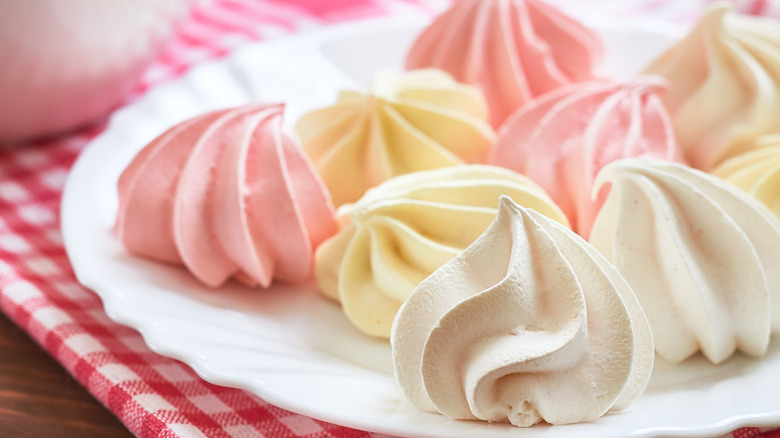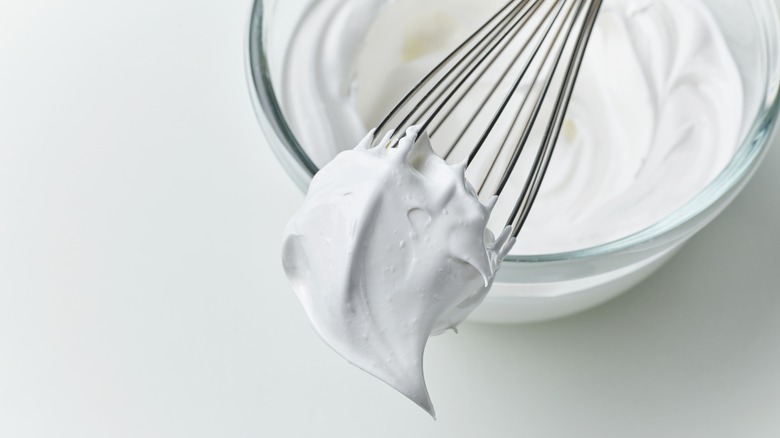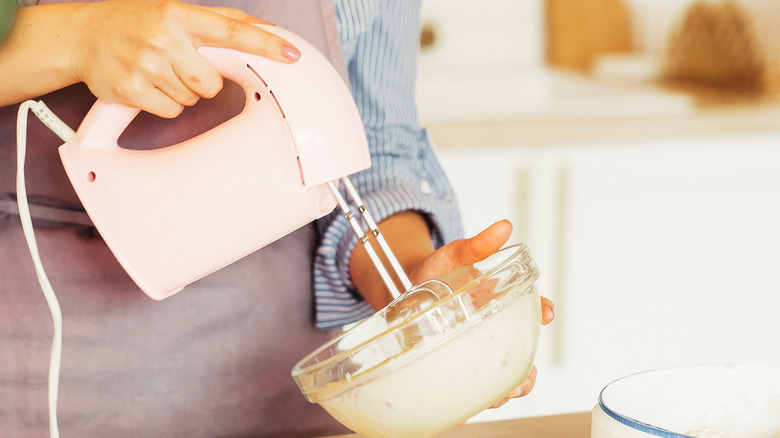The Easy Way To Fix Over-Whipped Egg Whites
Silky and smooth whipped egg whites are the key to marshmallow-y sweets, including baked Alaska, Swiss meringue buttercream, and colorful meringue cookies. Whipped egg whites can also be folded into cake batters, where the fluffy whipped mixture is gently added into a denser batter to incorporate air, resulting in the light texture of classic cakes like angel food cake.
But how does the airy goodness of whipped egg whites come to be? By gradually whisking and agitating the egg whites, their proteins unravel, and a foam begins to form. As you increase the speed to a whip, air is further incorporated into the egg whites, and its proteins form a network around pockets of air. The resulting structure is a delectably thick and silky mixture.
Making a meringue can feel like the most rewarding baking feat, likely because of its finicky nature. If you've tried to whip egg whites, only to face the defeat of over-whipping the mixture into a dry, curdled mess, you aren't alone. This is one of the most common issues bakers face when whipping egg whites — simply taking things a little too far. The good news is that you don't have to throw out all your hard work when this happens. Instead, to revitalize over-whipped egg whites, simply add an additional egg white into the mix.
How to bring whipped egg whites back to life
When adding an extra egg white to a deflated meringue, you'll want to do so carefully. First, beat the extra egg white in a separate bowl to slowly break up the proteins, then gently fold it into the collapsed meringue to incorporate moisture back in.
Once the egg white is incorporated, whip the egg whites once again, gradually increasing speed until you've reached stiff peaks. (You'll want to check the quality of the peaks early and often in the process.) You can recognize stiff peaks by turning your whisk or whisk attachment upside down and observing how the whipped egg whites hold their shape.
While soft or firm peaks look similar to whipped cream, stiff peaks are more sturdy and will hold their definitive shape, standing tall on their own without drooping down or curling in. Once you've achieved stiff peaks, your meringue has been re-hydrated; there's no need to mix any further.
Notice when you've over-whipped
If you're knee-deep into a meringue recipe and think you've over-whipped the egg whites, don't fear. The first step to fixing the problem is to recognize when you've gone too far.
Properly whipped egg whites should form a glossy, thick mixture that holds its shape, similar in appearance to marshmallow fluff. On the other hand, over-whipping egg whites can cause the proteins to clump and the water to leak out of solution (a phenomenon often referred to as weeping). The separated mixture becomes dull in color and forms grainy lumps. This dense and dry mixture not only looks alarming, but indeed defeats the desired lightness and air-incorporating functionality of whipped egg whites.
Some bakers recommend adding cream of tartar to egg whites as you whip to lower the pH and help retain the structure. However, even with the best intentions and techniques, over-whipping can occur, causing the meringue to break. When this happens, try adding in another egg white to bring the whipped meringue back into a silky solution. Once they're re-hydrated, the whipped egg whites are ready to be folded into batters or piped out and baked on silicone baking sheets.


